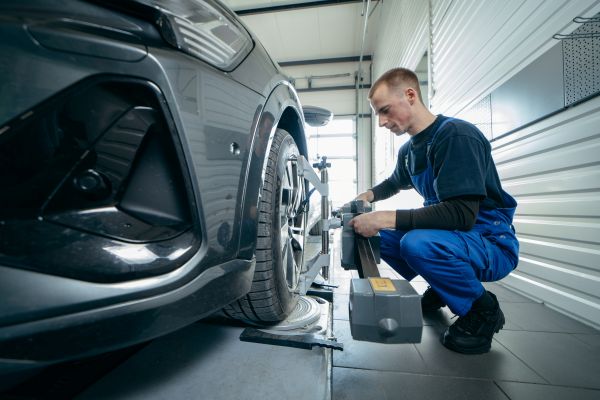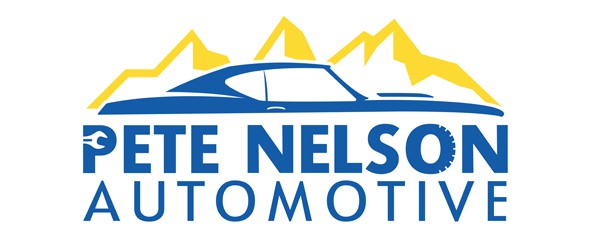 Wheel alignment, often overlooked amidst daily commutes, is essential for maintaining vehicle performance and safety. It involves adjusting your wheels to meet manufacturer specifications, ensuring proper camber, toe, and caster angles. Misalignment can cause uneven tire wear, reduced fuel efficiency, and safety hazards, like poor steering control or vehicle pulling. This article covers the recommended wheel alignment intervals, factors influencing them, signs that indicate misalignment, and the benefits of regular alignments. By staying on top of your vehicle’s alignment, you can save on repairs and enjoy a smoother, safer ride.
Wheel alignment, often overlooked amidst daily commutes, is essential for maintaining vehicle performance and safety. It involves adjusting your wheels to meet manufacturer specifications, ensuring proper camber, toe, and caster angles. Misalignment can cause uneven tire wear, reduced fuel efficiency, and safety hazards, like poor steering control or vehicle pulling. This article covers the recommended wheel alignment intervals, factors influencing them, signs that indicate misalignment, and the benefits of regular alignments. By staying on top of your vehicle’s alignment, you can save on repairs and enjoy a smoother, safer ride.
Understanding Wheel Alignment
Wheel alignment is a crucial maintenance task that involves adjusting the angles of your vehicle’s wheels. This process ensures they are properly aligned with each other and the road. Proper wheel alignment helps improve handling, enhances safety, and extends the life of your tires. Signs of misaligned wheels include an off-center steering wheel, unusual tire wear patterns, and a vehicle pulling to one side. Regular wheel alignment can prevent these issues and ensure your vehicle drives smoothly. You should consider wheel alignments whenever you notice changes in the vehicle’s handling or after installing new tires.
What is Wheel Alignment?
Wheel alignment is a fundamental maintenance practice for any vehicle. It involves adjusting the angles of the wheels to ensure that they complement each other and interact correctly with the road surface. Proper wheel alignment is essential for a responsive driving experience. It enhances vehicle safety by ensuring that the suspension and steering components are in optimal condition. During this process, technicians will focus on angles like camber, toe, and caster. These specific adjustments are key to your vehicle’s dynamics and how the tires connect to the road, ensuring even tire wear and correcting any drifting caused by misaligned wheels. Advanced alignment machines are used to precisely measure and adjust these angles per the manufacturer’s specifications.
Components of Wheel Alignment: Camber, Toe, and Caster
Wheel alignment refers to adjusting three critical settings: camber, toe, and caster, all of which play a significant role in performance and safety. Each of these angles affects different aspects of driving dynamics.
- Toe deals with the angle at which the wheels point toward or away from each other. This adjustment significantly impacts steering stability and how evenly your tires wear over time. Proper toe alignment ensures that tires do not scrub against the road, reducing premature tire wear.
- Camber concerns the vertical tilt of the tires. Incorrect camber can lead to uneven tire wear. Negative camber wears out the inner tread, while positive camber wears out the outer tread. Correct camber alignment is crucial to maintaining uniform tire contact with the road.
- Caster affects the ease of steering and vehicle stability. A positive caster means the steering components form a line from the wheel center towards the front, enhancing stability at higher speeds. Adjusting the caster involves precision since it influences how smoothly your vehicle handles.
At Pete Nelson’s, our skilled mechanics use advanced alignment machines to measure these settings, fine-tuning your vehicle’s alignment to factory standards
Why Wheel Alignment is Important
Proper wheel alignment is essential for maintaining your vehicle’s safety and performance. Aligned wheels ensure smoother handling, prevent uneven tire wear, and reduce unnecessary maintenance costs. Regular alignment checks also contribute to better fuel efficiency by minimizing rolling resistance, lowering your fuel expenses, and reducing environmental impact.
Impact on Tire Wear
Misaligned wheels lead to rapid and uneven tire wear, shortening their lifespan. Regular alignments prevent this by ensuring even tread wear. Staying on top of alignments will maximize your tire life and keep your vehicle running smoothly.
Fuel Efficiency Concerns
Poor alignment can lower your fuel efficiency by increasing rolling resistance. This can lead to up to a 10% drop in fuel economy, resulting in higher fuel costs. Maintaining proper alignment helps reduce this strain, saving you money in the long run.
Safety Considerations
A well-aligned vehicle offers better control, reducing the risk of accidents caused by pulling or drifting. Uneven tire wear from misalignment can reduce traction, especially in poor weather conditions. Regular alignments are essential for maintaining vehicle stability and driver safety.
Recommended Wheel Alignment Intervals
Maintaining proper wheel alignment is essential for safe, smooth driving. Experts suggest regular tire alignments as part of routine maintenance. Wheel misalignment can cause uneven wear, affecting handling, fuel efficiency, and tire lifespan. Most experts and vehicle manufacturers recommend a four-wheel alignment every 6,000 to 10,000 miles, but this can vary based on your driving conditions, alignment type, and tire type. Regular checks within this time frame help maintain optimal performance and extend tire life.
General Guidelines: 6,000 to 10,000 Miles
Most manufacturers recommend alignments every 6,000 miles, aligning with every other oil change. This helps prevent uneven tire wear caused by misalignment. While 6,000 miles is the rule of thumb, some experts suggest extending this to 10,000 miles, especially if driving on rough terrain. Regularly checking wheel assemblies ensures your vehicle’s performance remains at its best.
Manufacturer Recommendations
Check your vehicle’s owner manual for manufacturer-specific guidance. Most recommend an alignment every 6,000 miles or every six months. Factors like alignment type, tire type, and driving habits influence these recommendations. Regular alignments are crucial for maintaining vehicle longevity.
Influence of Driving Habits
Driving on rough or bumpy roads, hauling heavy loads, or frequent impacts (like hitting curbs) can affect alignment. These conditions may require more frequent alignments to prevent uneven wear and steering wheel vibrations. Pay attention to signs like pulling to one side or off-center steering, which may indicate alignment issues needing immediate attention.
Effect of Road Conditions
Poor road conditions, potholes, or uneven surfaces can disrupt alignment and affect handling. If your roads are rough or you encounter frequent hazards, more frequent wheel alignments may be necessary. Proper alignment ensures better traction, stability, and overall safety.
Signs Your Vehicle Needs a Wheel Alignment
Misaligned wheels can cause steering issues, tire damage, and safety concerns. Recognizing the signs early can prevent costly repairs and ensure a smooth driving experience.
Drifting or Pulling to One Side
If your car pulls to one side or drifts, even on a straight road, it’s a sign of misalignment. Steering adjustments shouldn’t be necessary to keep your vehicle centered. Schedule an alignment check at Pete Nelson Automotive if you notice these issues.
Crooked Steering Wheel
A crooked steering wheel when driving straight often means your wheels are misaligned. Ignoring this can lead to further steering component damage. Our certified mechanics can quickly resolve this with a precise alignment.
Uneven Tire Wear
Visible uneven tire wear on the inner or outer edges is a clear indicator of alignment problems. Left unaddressed, this reduces tire lifespan and increases replacement costs. Regular alignments at Pete Nelson Automotive prevent these issues and keep your tires in great shape.
Benefits of Regular Wheel Alignments
Regular wheel alignments ensure your vehicle performs at its best by maintaining manufacturer specifications for improved handling and control. Expert alignment services can extend your tire lifespan, prevent uneven tread wear, and enhance your fuel efficiency by reducing rolling resistance.
Enhanced Driving Comfort
Proper alignment minimizes steering pull and vehicle wander, ensuring a smoother, more comfortable ride. When your wheels point in the right direction, road friction decreases, preventing premature tire wear and vibrations.
Improved Safety
Driving with properly aligned wheels enhances vehicle stability and control, reducing the risk of accidents. Misalignment compromises safety, leading to uneven tire wear and unpredictable handling. Regular alignments contribute to safer roads for you and others.
Prolonged Tire Lifespan
Extend the life of your tires with routine alignments. Misaligned wheels cause rapid, uneven tire wear, often resulting in costly replacements. Regular alignment checks every 5,000 to 10,000 miles can maximize your tires’ longevity and maintain optimal fuel efficiency.
Better Vehicle Performance
A well-aligned vehicle experiences less strain on its components, leading to better overall performance. With fewer issues like steering pull and vehicle wander, your car will drive more efficiently.
How to Maintain Proper Wheel Alignment
Maintaining proper wheel alignment is essential for your vehicle’s safety and tire longevity. Proper alignment ensures optimal tire contact with the road, improving handling and fuel efficiency. Certified technicians at Pete Nelson’s can check your wheels for correct camber, toe, and caster angles, ensuring smooth performance.
Regular Inspections
Routine inspections can catch alignment issues early, preventing uneven tire wear and steering problems. It’s recommended to check your alignment every 6,000 to 10,000 miles or annually. If you’ve recently hit a curb or drive frequently on rough roads, a thorough alignment check is essential.
Adjustments During Routine Maintenance
Including wheel alignment in your regular maintenance keeps your vehicle operating safely. Ensuring your wheels meet manufacturer standards reduces abnormal tire wear and enhances your driving experience. Don’t ignore signs like steering pull or vibrations — certified mechanics at Pete Nelson’s can help.
Contact Pete Nelson Automotive for Expert Wheel Alignment Services
Proper wheel alignment is key to maintaining your vehicle’s performance, safety, and longevity. If you’re noticing signs of misalignment such as steering pull, uneven tire wear, or a crooked steering wheel, it’s time to have your alignment checked.
Trust the certified mechanics at Pete Nelson Automotive for expert wheel alignment services. Conveniently located in Sun City, Arizona, we offer comprehensive maintenance to keep your car running smoothly. Call us today at 623-974-4723 to schedule your wheel alignment service and ensure your vehicle is in top condition. We’re committed to providing quality care for all your automotive needs!


